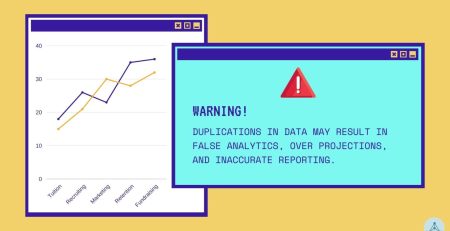The Rise of Student Identity Theft in Colleges – Tips and Resources to Stay Protected
Did you know that college students are around seven times more likely to become identity theft victims? This interesting statistic might surprise most people considering most students don’t have a lot of money and are usually in debt due to student loans.
However, money isn’t always the motive behind identity theft. In recent years, scammers have been penetrating college defense systems through fraudulent applications using fake personas. This new type of fraud has been growing in the post-pandemic age as on-campus operations and activities go online.
The rise of student identity theft in colleges is a worrying sign for the industry. As a result, colleges and students must take mandatory steps to protect their data privacy and integrity.
In this post, we’ll explain why students and colleges are becoming hot targets for malicious criminals along with tips and resources to stay protected.
4 Reasons Why Students and Colleges Are Becoming Victims of Identity Theft
1. Poor Due Diligence
Most students don’t actively monitor their bank accounts. As a result, identity thieves use their resources to get a hold of account statements and access codes. Instead of emptying the accounts, these criminals steal small amounts frequently. As a result, students remain blissfully unaware that they’re being robbed every day.
2. Social Security Numbers
Many colleges operate with outdated IT infrastructures that are vulnerable to external threats. Since students are required to provide personal information, such as their social security numbers, during the registration process, hackers can get access to them and use them for their malicious bidding.
3. Stolen Devices
In many cases, students become victims of identity theft due to stole laptops and mobile devices. These devices typically contain personal information which scammers can use to steal student identities, such as credit card information, learning management platforms, and accounts.
4. Fraudulent Student Applications
Many colleges across the country offer scholarships and grant money to deserving students. Unfortunately, many scammers are well aware of this and use their skills to impersonate students and steal the money offered by colleges.
Even before the Pandemic, the US Education Department reported nearly 140,000 fraudulent applications related to loans, loan forgiveness, and scholarships. These numbers have grown exponentially since then.
Tips for Students and Colleges to Prevent Identity Theft
Students
Students can best prevent identity theft by adopting solid security habits. For instance, they can stop letting anyone borrow their cards or share their social security number and other private information with anyone in person or over the phone.
Students can also leverage simple technologies to their aid, such as instant transaction notifications or virtual private networks (VPNs) when using public networks on their campus, libraries, or other places.
College Departments
Similarly, college departments, from administration to management and student faculties, must develop and adhere to a strict data governance plan. Only by establishing strict security protocols can they keep scammers at bay.
Popular solutions include enabling access management with multi-factor authentication and securing laptops, computers, smartphones, and other devices with strong passwords. Moreover, since most colleges employ email as their primary communication channel, they should be wary of exchanging sensitive information and encrypting their data during the process.
Leveraging S.A.F.E to Protect Your Campus from Fraudulent Applications and Student Identity Theft
AMSA Connect’s Student Application Fraudulent Examination (or S.A.F.E) is a one-of-a-kind solution specifically designed to prevent fraudulent student applications. Hence, it can be a powerful tool for colleges to minimize the risk of identity theft, as many scammers look to impersonate students during the initial enrollment process and steal scholarships, loans, and grant money.
S.A.F.E is the world’s first and only automated solution capable of detecting, eliminating, and reporting fraud in real-time. Hence, it’s undoubtedly a powerful tool any college can equip in their infrastructure to improve their overall student lifecycle management.
Conclusion
Cybersecurity threats in the post-pandemic age are more advanced and sophisticated than their traditional counterparts. Although identity theft has been around for a long time, it’s becoming more difficult to prevent as scammers and hackers rapidly upgrade their technologies and adopt new tactics and practices.
Moreover, since the education industry has been relatively slow regarding digital transformation initiatives, malicious criminals are taking advantage of their lackluster defensive capabilities.
AMSA Connect aims to help colleges to enable and optimize interoperability while securing every touchpoint in the student lifecycle.
With S.A.F.E, you can safeguard one of the most vulnerable touchpoints in your digital ecosystem and prevent scammers from using student applications to commit identity fraud. This game-changing solution provides multiple layers of protection via AI and ML-enhanced fraud detection, notification, and eradication.
So, get in touch with our team right away and let us equip your IT infrastructure with this innovative solution.
Interested in learning more? Check out these blogs below:
- How ChatGPT is threatening colleges and universities
- S.A.F.E. the Ultimate Applicant Fraud Prevention Solution for Colleges and Universities
- College Admissions Fraud: The Deeper Truth
- Enhancing Academic Integrity: How S.A.F.E. Safeguards Colleges and Universities Against Fraudulent Applications
- Safeguarding Higher Education: The Imperative of S.A.F.E.










Leave a Reply